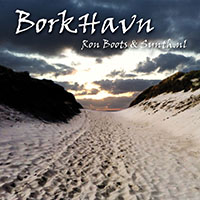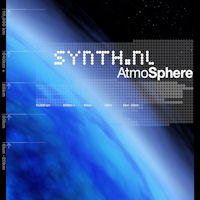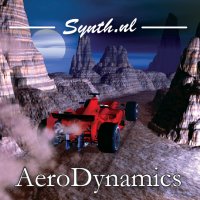
This morning I finished another Yusynth module. This time it is an EMS clone filter also called diode ladder filter. You can see the diodes on the left top corner of the PCB. The values of these diodes are critical and need to be matched. You can measure the voltage drop over the diode. Typically that would be 570-590 mV. But I had to select 14 that where within a range of 3 mV of each other. I did this by measuring them and writing the value on a big piece of paper and then put it on that value. Then the next one and so on. Until you end up with 14 on one spot or just one above or below.

I had the PCB ready already, except for the diodes. So after matching them I soldered them to the PCB. After that I started with the wires for the front panel components, leaving them long enough to be able to reach every front panel component later on. And then I started doing the wiring that connect the front panel components together. You can clearly see this in the picture on the right. Here you can also have a good look at the bracket that will hold the PCB later on. Bridechamber came up with a great idea for that. Just use the potmeters on the front panel to hold it in position. I wanted to use blank wire btw for the ground, but for some reason the electronics shop where I usually get my stuff from just doesn't have that anymore. Well no disaster but blank wire is always easy for hooking up the ground of the oscilloscope later on while testing.

In the picture on the left you see the finished module from the back. Now you can see why I always leave the wires on the PCB so long. In this way you can nicely bundle them together so that it becomes a nice cable tree. Is that important? Uhhhh no not at all. but it just looks better ;) On the bottom you can see the screw connector that I use for the power now. I actually works quite well. I just ordered some female MOTM style power connectors from Bridechamber that I will attach to this connector so that I can easily hook them up to the MOTM power distribution boards.

After that it was time for some testing. After the usual smoke-test I hooked one of the inputs up to a noise generator from an Oakley module. The cut off potmeter did its work quite nicely, so the filter worked, but on the resonance potmeter I didn't really get any noticeable result. So I started to check my wiring and measure if it did what it was supposed to and it did. But no result. So I started to look at the schematics and when I was just doing that I read a note from Yves that this could happen. It had to do with one resistor that determines the range for the resonance. It had to be changed from 680K to 220K. Well I didn't have a 220K but I soldered two 100K's in series to get 200K and that did the job nicely.

After I changed the resistor it started to auto oscillate as well. And man does it sound nice on that :) I hooked it up to an LFO module to generate some nice sound effects with it. In the picture on the left you can see the finished module from the front. As you can see it even has two audio inputs and the frequency and resonance of the filter can be controlled with CV signals. You can even tune the auto oscillation to do 1 Volt per Octave, so that it becomes a real oscillator. Yves says it will track over a span of 3 Octaves. But you need to calibrate this with a trim potmeter. I haven't tried this yet. I will do that in a later stage. To be honest I don't think that I will ever use it like that . But it is nice that it can. All in all another nice result this morning. Let's go to the next one :)
 This morning I finished another Yusynth module. This time it is an EMS clone filter also called diode ladder filter. You can see the diodes on the left top corner of the PCB. The values of these diodes are critical and need to be matched. You can measure the voltage drop over the diode. Typically that would be 570-590 mV. But I had to select 14 that where within a range of 3 mV of each other. I did this by measuring them and writing the value on a big piece of paper and then put it on that value. Then the next one and so on. Until you end up with 14 on one spot or just one above or below.
This morning I finished another Yusynth module. This time it is an EMS clone filter also called diode ladder filter. You can see the diodes on the left top corner of the PCB. The values of these diodes are critical and need to be matched. You can measure the voltage drop over the diode. Typically that would be 570-590 mV. But I had to select 14 that where within a range of 3 mV of each other. I did this by measuring them and writing the value on a big piece of paper and then put it on that value. Then the next one and so on. Until you end up with 14 on one spot or just one above or below. I had the PCB ready already, except for the diodes. So after matching them I soldered them to the PCB. After that I started with the wires for the front panel components, leaving them long enough to be able to reach every front panel component later on. And then I started doing the wiring that connect the front panel components together. You can clearly see this in the picture on the right. Here you can also have a good look at the bracket that will hold the PCB later on. Bridechamber came up with a great idea for that. Just use the potmeters on the front panel to hold it in position. I wanted to use blank wire btw for the ground, but for some reason the electronics shop where I usually get my stuff from just doesn't have that anymore. Well no disaster but blank wire is always easy for hooking up the ground of the oscilloscope later on while testing.
I had the PCB ready already, except for the diodes. So after matching them I soldered them to the PCB. After that I started with the wires for the front panel components, leaving them long enough to be able to reach every front panel component later on. And then I started doing the wiring that connect the front panel components together. You can clearly see this in the picture on the right. Here you can also have a good look at the bracket that will hold the PCB later on. Bridechamber came up with a great idea for that. Just use the potmeters on the front panel to hold it in position. I wanted to use blank wire btw for the ground, but for some reason the electronics shop where I usually get my stuff from just doesn't have that anymore. Well no disaster but blank wire is always easy for hooking up the ground of the oscilloscope later on while testing. In the picture on the left you see the finished module from the back. Now you can see why I always leave the wires on the PCB so long. In this way you can nicely bundle them together so that it becomes a nice cable tree. Is that important? Uhhhh no not at all. but it just looks better ;) On the bottom you can see the screw connector that I use for the power now. I actually works quite well. I just ordered some female MOTM style power connectors from Bridechamber that I will attach to this connector so that I can easily hook them up to the MOTM power distribution boards.
In the picture on the left you see the finished module from the back. Now you can see why I always leave the wires on the PCB so long. In this way you can nicely bundle them together so that it becomes a nice cable tree. Is that important? Uhhhh no not at all. but it just looks better ;) On the bottom you can see the screw connector that I use for the power now. I actually works quite well. I just ordered some female MOTM style power connectors from Bridechamber that I will attach to this connector so that I can easily hook them up to the MOTM power distribution boards. After that it was time for some testing. After the usual smoke-test I hooked one of the inputs up to a noise generator from an Oakley module. The cut off potmeter did its work quite nicely, so the filter worked, but on the resonance potmeter I didn't really get any noticeable result. So I started to check my wiring and measure if it did what it was supposed to and it did. But no result. So I started to look at the schematics and when I was just doing that I read a note from Yves that this could happen. It had to do with one resistor that determines the range for the resonance. It had to be changed from 680K to 220K. Well I didn't have a 220K but I soldered two 100K's in series to get 200K and that did the job nicely.
After that it was time for some testing. After the usual smoke-test I hooked one of the inputs up to a noise generator from an Oakley module. The cut off potmeter did its work quite nicely, so the filter worked, but on the resonance potmeter I didn't really get any noticeable result. So I started to check my wiring and measure if it did what it was supposed to and it did. But no result. So I started to look at the schematics and when I was just doing that I read a note from Yves that this could happen. It had to do with one resistor that determines the range for the resonance. It had to be changed from 680K to 220K. Well I didn't have a 220K but I soldered two 100K's in series to get 200K and that did the job nicely. After I changed the resistor it started to auto oscillate as well. And man does it sound nice on that :) I hooked it up to an LFO module to generate some nice sound effects with it. In the picture on the left you can see the finished module from the front. As you can see it even has two audio inputs and the frequency and resonance of the filter can be controlled with CV signals. You can even tune the auto oscillation to do 1 Volt per Octave, so that it becomes a real oscillator. Yves says it will track over a span of 3 Octaves. But you need to calibrate this with a trim potmeter. I haven't tried this yet. I will do that in a later stage. To be honest I don't think that I will ever use it like that . But it is nice that it can. All in all another nice result this morning. Let's go to the next one :)
After I changed the resistor it started to auto oscillate as well. And man does it sound nice on that :) I hooked it up to an LFO module to generate some nice sound effects with it. In the picture on the left you can see the finished module from the front. As you can see it even has two audio inputs and the frequency and resonance of the filter can be controlled with CV signals. You can even tune the auto oscillation to do 1 Volt per Octave, so that it becomes a real oscillator. Yves says it will track over a span of 3 Octaves. But you need to calibrate this with a trim potmeter. I haven't tried this yet. I will do that in a later stage. To be honest I don't think that I will ever use it like that . But it is nice that it can. All in all another nice result this morning. Let's go to the next one :)










No comments:
Post a Comment